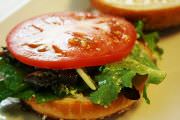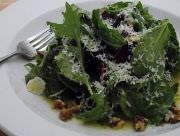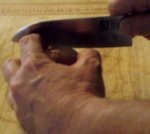A Simple Fish Brine
How To Brine
When I brine proteins I usually brine them for 24 hours, unless the size of the protein dictates a shorter or longer brine time. After brining, I rinse the protein under fresh running water, blot it dry with paper towels, and allow it to completely air dry in the refrigerator, usually overnight.
This does a couple of things. First, it allows the salt in the protein to reach a point of equilibrium within the protein. Second, by thoroughly air drying, the skin or outside of the meat, will develop a better maillard reaction, it caramelizes better.
This is why brining takes planning, I can't just decide at 3:30 in the afternoon that I am going to make brined arctic char, for dinner that same night.
However, the benefits more than outweigh the inconvenience because the meat always comes out moist, tender and juicy which is the whole point of brining in the first place.
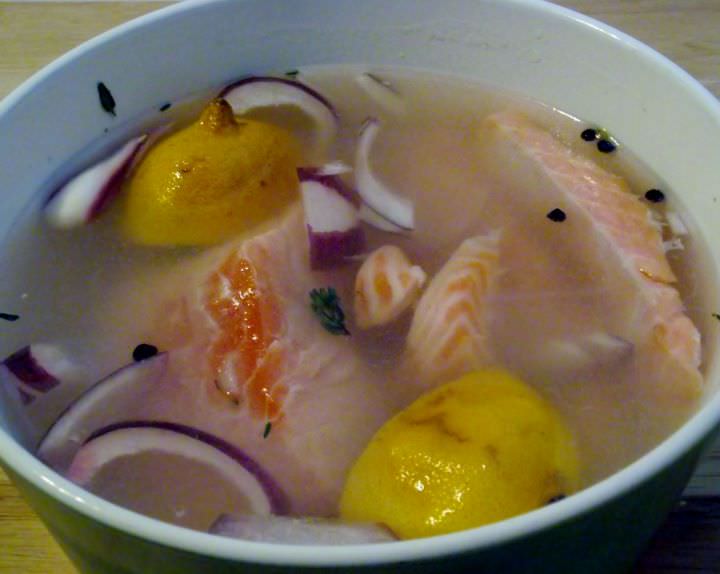 Salmon after 12 hours in brine.
Salmon after 12 hours in brine.Notice the flesh is opaque. It will lose that opaque look and revert back to its natural color once the salt in the fish achieves equilibrium. This is why the air drying step is so important.
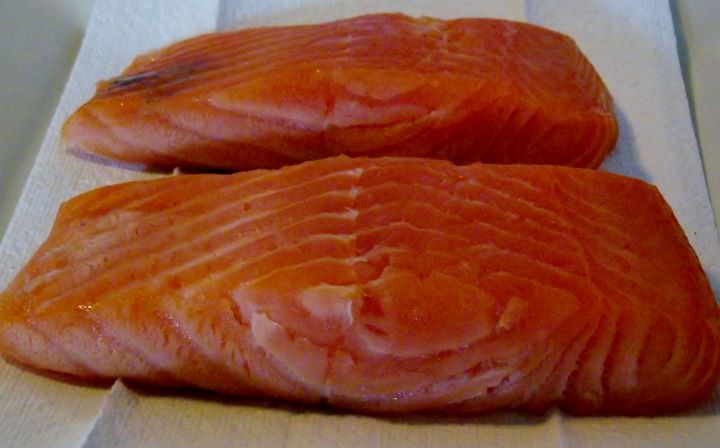 Salmon after brining for 12 hours and air drying for 1 hour.
Salmon after brining for 12 hours and air drying for 1 hour.You can see that the flesh is already recovering its natural look.
Fish and seafood are delicate and easily overcooked. When seafood is overcooked it dries out and takes on a rubbery texture. This is especially true of shellfish. Learning how to brine will help your seafood stay moist and flavorful. This fish brine is perfect for salmon and shellfish, or any fatty seafood.
Fish Brine
- Prep Time: 40 minutes
- Brining time: up to 24 hours
Ingredients
- 1.2 liters / 5 cups water
- 45 grams / 1.5 ounces / 1/4 cup Kosher salt
- 30 grams / 1.05 ounces / 2 Tbsp sugar
- 10 ml / 2 tsp lemon juice
- 5 sprigs fresh thyme
- ¼ cup chopped onion
- 4 cloves garlic, peeled and crushed
- 1 tsp cracked black pepper
Method
- Prepare an ice bath in your sink, see notes.
- Add the water to a 3-quart pot. Bring to a full boil and add the salt and sugar, stir to dissolve, and return to a boil.
- Remove from heat and place in the ice bath. Add the remaining ingredients. Stir occasionally to dissipate the heat. Add more ice to the bath as needed to bring the temperature to 40° F / 4° C.
- Add the fish to the brine. You may need to place a small plate on top of the fish to completely submerge it.
- Brine in the Refrigerator overnight, 24-hours.
- About an hour before you're ready to cook the fish remove it from the brine and rinse thoroughly under cold running water.
- Blot the fish thoroughly with paper towels until dry. Place the fish on a cooling rack and allow to air dry on the counter for 45 minutes to an hour.
Notes
- Fill your sink about a quarter of the way with cold tap water. Place your pot in the water and fill the sink up with ice.
- This is a simple fish brine, but the truth is you can brine fish, or any protein, with nothing but water and salt just omitting all the other ingredients.
Tags: fish brine, how to brine
